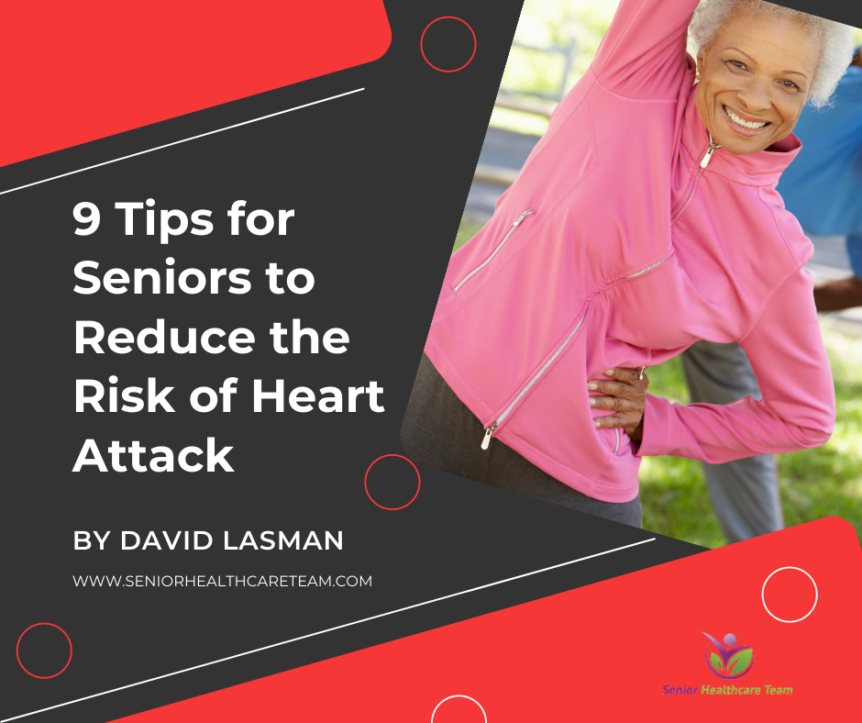Sounds simple doesn’t it? Heart disease is the No. 1 cause of death in the United States. Stroke is the No. 5 cause of death in the United States.
One of the biggest contributors to these statistics is a lack of commitment to a heart healthy lifestyle. Your lifestyle is not only your best defense against heart disease and stroke, it’s also your responsibility. A heart-healthy lifestyle includes the ideas listed below. By following these simple steps you can reduce all of the modifiable risk factors for heart disease, heart attack and stroke.
Stop smoking
If you smoke, quit. If someone in your household smokes, encourage them to quit. We know it’s tough. But it’s tougher to recover from a heart attack or stroke or to live with chronic heart disease. Commit to quit. We’re here to help if you need it.
Choose good nutrition
A healthy diet is one of the best weapons you have to fight cardiovascular disease. The food you eat (and the amount) can affect other controllable risk factors: cholesterol, blood pressure, diabetes and overweight. Choose nutrient-rich foods — which have vitamins, minerals, fiber and other nutrients but are lower in calories — over nutrient-poor foods. Choose a diet that emphasizes intake of vegetables, fruits, and whole grains; includes low-fat dairy products, poultry, fish, legumes, non-tropical vegetable oils, and nuts; and limits intake of sweets, sugar-sweetened beverages, and red meats. And to maintain a healthy weight, coordinate your diet with your physical activity level so you’re using up as many calories as you take in.
High blood cholesterol
Fat lodged in your arteries is a disaster waiting to happen. Sooner or later it could trigger a heart attack or stroke. You’ve got to reduce your intake of saturated fat, trans fat and cholesterol and get moving. If diet and physical activity alone don’t get those numbers down, then medication may be the key. Take it just like the doctor orders. Here’s the lowdown on where those numbers need to be:
- Total Cholesterol – Your total cholesterol score is calculated using the following equation: HDL + LDL + 20 percent of your triglyceride level.
- Low-density-lipoprotein (LDL) cholesterol = “bad” cholesterol – A low LDL cholesterol level is considered good for your heart health. However, your LDL number should no longer be the main factor in guiding treatment to prevent heart attack and stroke, according to the latest guidelines from the American Heart Association. For patients taking statins, the guidelines say they no longer need to get LDL cholesterol levels down to a specific target number. Lifestyle factors such as a diet high in saturated and transfats can raise LDL cholesterol.
- High-density-lipoprotein (HDL) cholesterol = “good” cholesterol – With HDL (good) cholesterol, higher levels are typically better. Low HDL cholesterol puts you at higher risk for heart disease. People with high blood triglycerides usually also have lower HDL cholesterol. Genetic factors, type 2 diabetes, smoking, being overweight and being sedentary can all result in lower HDL cholesterol.
- Triglycerides – Triglyceride is the most common type of fat in the body. Normal triglyceride levels vary by age and sex. A high triglyceride level combined with low HDL cholesterol or high LDL cholesterol is associated with atherosclerosis, the buildup of fatty deposits in artery walls that increases the risk for heart attack and stroke.
Lower high blood pressure

It’s a major risk factor for stroke a leading cause of disability in the United States. Stroke recovery is difficult at best and you could be disabled for life. Shake that salt habit, take your medications as recommended by your doctor and get moving. Those numbers need to get down and stay down. An optimal blood pressure reading is less than 120/80 mmHg.
Be physically active every day
Be physically active every day. Research has shown that at least 150 minutes per week of moderate-intensity physical activity can help lower blood pressure, lower cholesterol and keep your weight at a healthy level. And something IS better than nothing. If you’re inactive now, start out slow. Even a few minutes at a time may offer some health benefits. Studies show that people who have achieved even a moderate level of fitness are much less likely to die early than those with a low fitness level.
Aim for a healthy weight
Obesity is highly prevalent in America, not only for adults but also for children. Fad diets and supplements are not the answer. Good nutrition, controlling calorie intake and physical activity are the only way to maintain a healthy weight. Obesity places you at risk for high cholesterol, high blood pressure and insulin resistance, a precursor of type 2 diabetes — the very factors that heighten your risk of cardiovascular disease. Your Body Mass Index (BMI) can help tell you if your weight is healthy.
Manage diabetes
At least 68% of people >65 years of age with DM die of some form of HD; 16% die of stroke . Other risk factors, such as high blood pressure, high cholesterol, smoking, obesity, and lack of physical activity can greatly increase a person with diabetes’ chance of developing cardiovascular disease.
Reduce stress
A few studies have noted a relationship between coronary heart disease risk and stress in a person’s life that may affect the risk factors for heart disease and stroke. For example, people under stress may overeat, start smoking or smoke more than they otherwise would. Research has even shown that stress reaction in young adults predicts middle-age blood pressure risk.
Limit alcohol
Drinking too much alcohol can raise blood pressure, increase cardiomyopathy, stroke, cancer, and other diseases It can contribute to high triglycerides and produce irregular heartbeats. Excessive alcohol consumption contributes to obesity, alcoholism, suicide and accidents.
However, there is a cardioprotective effect of moderate alcohol consumption. If you drink, limit your alcohol consumption to no more than two drinks per day for men and no more than one drink per day for women. The National Institute on Alcohol Abuse and Alcoholism defines on drink as 1-1/2 fluid ounces (fl oz) of 80-proof spirits (such as bourbon, Scotch, vodka, gin, etc.), 5 fl oz of wine, or 12 fl oz of regular beer. It’s not recommended that nondrinkers start using alcohol or that drinkers increase the amount they drink.
Maintaining a healthy lifestyle and preventing a heart attack is often centered around remaining active as we age. Just in case you needed more reasons, here are a few more to help you feel young. Read this next – Don’t Let Age Define Your Activity: 10 benefits of adding exercise into life
By David Lasman – “Ask Medicare Dave” | President – Senior Healthcare Team
wwww.SeniorHealthcareTeam.com | 866-333-7340
Selecting the right healthcare plan through Medicare can be overwhelming and downright stressful. Senior Healthcare Team is a nationwide resource that provides guidance and support about Medicare to seniors at no cost to them and helps them to choose the most suitable insurance plan tailored to their specific needs and budget. Our goal is to educate and empower our clients to make the best decisions regarding their healthcare and clear up the confusion of Medicare. At Senior Healthcare Team, we aren’t partial to any one insurance company. Our loyalty is to our clients and our mission is to provide them with the best healthcare options at the very lowest cost.

